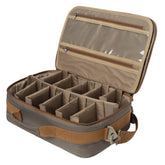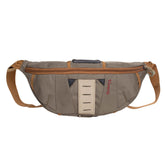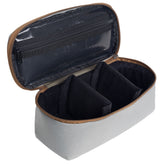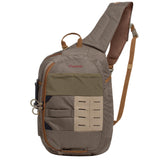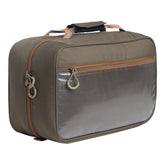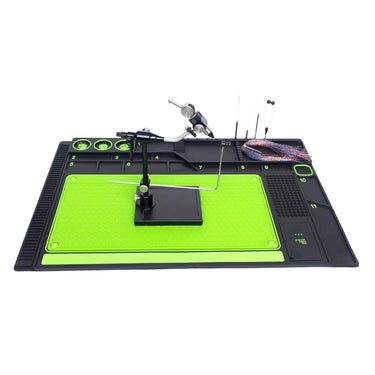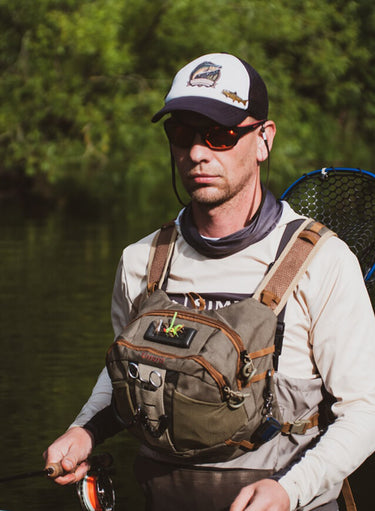Flies: Essential Streamer, Saltwater, and Bass Kits for Assorted Fly Fishing
As an avid fly fisher, I've explored various kits that can enhance my fishing experience. Choosing the right flies, whether it's for targeting bass or navigating saltwater, is crucial for maximizing your catch. Streamer flies and saltwater flies kits are particularly effective, providing the variety needed to adapt to different conditions and fish species.

I have found that having an assorted fly fishing flies kit lets me be prepared for any situation. With each cast, the right fly can make a world of difference in enticing fish to take the bait. It’s not just about having the right gear; it's about being ready to fly fish in various environments and maximizing the chances of a great day on the water.
With an app to track my progress and conditions, I can refine my technique and make better-informed decisions when selecting flies. This combination of the right kits and technology can elevate my fly fishing experience to new heights.
Understanding Fly Fishing Flies

Fly fishing relies heavily on the selection and use of various fishing flies designed to attract specific fish species. Knowing the history, types, and appropriate selection of flies can enhance my fishing experience significantly.
History and Evolution of Flies
The use of flies for fishing dates back to ancient Rome, where authors documented fly fishing techniques. Over the centuries, the craft has evolved, with significant contributions from regions like England and later America.
The mid-19th century saw the rise of commercially tied flies. Companies like Umpqua and Orvis emerged, introducing innovative materials and patterns. This evolution allowed anglers to access a wide range of flies, making it easier to target species like trout, bass, and even saltwater fish such as tarpon and permit.
Types of Flies and Their Uses
Fishing flies come in various categories, each serving a specific purpose:
- Dry Flies: I use these to float on the water surface, mimicking insects. They're particularly effective for trout.
- Nymphs: These represent the juvenile stages of aquatic insects. They work well below the surface, especially for trout.
- Streamers: I prefer streamers for larger fish like bass and pike. They imitate baitfish and provoke strikes.
- Saltwater Flies: These flies target species like bonefish, redfish, and bluefish. Their sturdiness is crucial for the harsh saltwater environment.
Each type requires different techniques and environments for effective use.
Fly Selection for Target Species
Choosing the right fly is critical for success. Factors include fish species, water conditions, and local hatches. For example, when targeting bass, I consider using larger streamers, especially in murky waters.
Fly color also plays an important role. In darker waters, I often opt for brighter colors to enhance visibility. Conversely, subtler colors can be more effective in clear waters. The selection process involves understanding the species’ feeding habits and the environment, ensuring I’m prepared for various fishing conditions.
By gauging these elements and remaining adaptable, I can improve my chances of a successful catch on my fishing trips.
Building the Ideal Fly Fishing Kit

Creating the perfect fly fishing kit requires careful selection of components tailored to specific fishing scenarios. Each kit should include essential flies designed for different species and environments, ensuring that I am prepared for any fishing opportunity.
Components of a Streamer Flies Kit
For a streamer flies kit, I prioritize durability and effectiveness. Key components should include popular patterns like the Clouser Minnow and Woolly Bugger, known for attracting fish in various conditions.
I ensure that my kit features a mix of sizes and color variations. This diversity allows me to match local prey, which can boost my chances of success. Organizing them in a sturdy box prevents tangling and damage, maintaining the integrity of the flies.
Essentials for a Saltwater Flies Kit
In assembling a saltwater flies kit, I focus on patterns that can withstand harsh marine environments. Flies such as the Crazy Charlie are essential for targeting species like barracuda and permit.
I also incorporate streamers in bright colors and heavy weights to sink quickly in the water. A selection of poppers is crucial for enticing surface feeders. Using rust-resistant hooks is imperative, as saltwater can degrade standard materials.
Assembling a Bass Flies Kit
When I create a bass flies kit, I select flies that mimic baitfish, frogs, and insects. Effective patterns include topwater poppers and streamers specifically designed to attract striped bass.
I consider adding some terrestrials and nymphs for versatility. Organizing my flies by type and size enhances accessibility during a fishing trip. This method allows me to adapt to different stages of the bass's feeding behavior.
Variety Packs: Assorted Fly Fishing Flies
Though targeting specific species is vital, I also appreciate the value of having assorted fly fishing flies. These variety packs often include a range of patterns suitable for multiple species, which can be advantageous.
An assorted kit can be particularly beneficial for those new to fly fishing, including kids. It offers them the chance to experiment with different flies without a significant investment. Curated packs should feature both freshwater and saltwater options for maximum adaptability while fishing.
Maintaining and Upgrading Your Fly Fishing Setup
To ensure the longevity of your fly fishing setup, proper maintenance and timely upgrades are essential. I prioritize specific care techniques, know when to replace my fishing flies, and seek reliable sources for new gear.
Care Tips for Maximizing Durability
I clean my fly rods and reels after each trip to prevent corrosion and maintain functionality. Using freshwater, I rinse off salt, dirt, and debris. I recommend a soft cloth for the rods to avoid scratches.
Storage is another crucial aspect. I store my rods in protective cases and keep my reels covered. This prevents dust buildup and potential damage.
Regularly checking my fly line for nicks or abrasions helps maintain performance. If I notice wear, I cut back the line or replace it. Investing in quality tools for maintenance, like line cleaners, can extend the life of my gear.
When to Replace Fishing Flies
I evaluate my flies regularly for any signs of wear, such as frayed tippets or damaged hooks. If a fly doesn't perform or looks worn out, it's time for a replacement.
Key indicators for replacing flies include:
- Visible damage to the body or materials
- Dulling or bending of the hook
- Poor casting performance
I keep a close eye on specialized flies, like those from my saltwater flies kit, as they can wear quicker due to harsher environments. Familiarizing myself with quality brands, like Orvis, helps me make informed decisions regarding replacements.
Where to Find Quality Flies for Sale
For new flies, I often turn to reputable retailers known for quality and selection. Brands like Orvis offer reliable options for all fishing conditions.
Online platforms such as AliExpress can also provide good deals, but I research the seller's ratings. I prefer purchasing locally when possible to support small businesses and get expert advice.
When I shop online, I check reviews to ensure I'm getting well-made flies. A balanced mix of local shops and online sources helps me maintain a varied collection while sticking to my budget.



